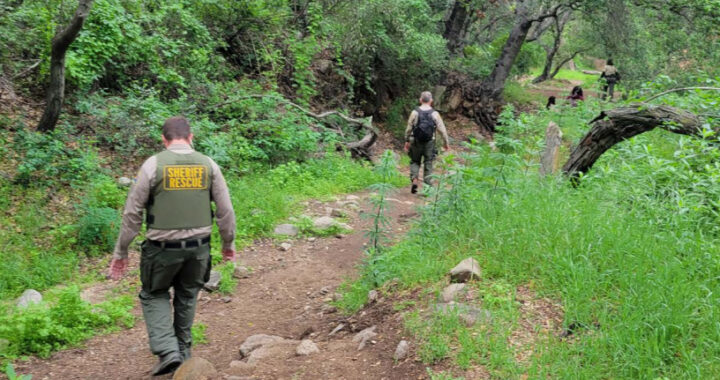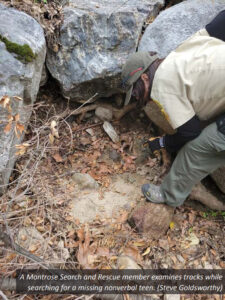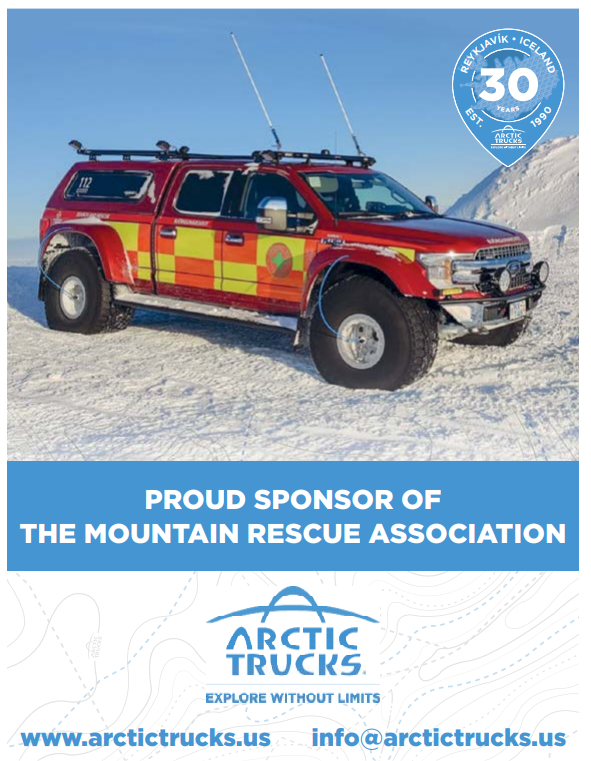Rick Lindfors – Meridian Editor in Chief
GLENDALE, Calif. – Intelligence gathering and quick thinking enabled rescuers to safely bring home a teenager who had gone missing in a park in Los Angeles County. The teen, who was autistic and nonverbal, presented a challenge in communication that serves as a lesson for other SAR teams.
The teen disappeared just before noon on April 3 in Crescenta Valley Park. Members of Montrose Search and Rescue, Altadena Mountain Rescue and Sierra Madre Search and Rescue responded along with local police officers and aircraft. The use of aircraft sparked concern for MSAR member and operations leader John Camphouse. “My immediate concern was […] is the helicopter going to cause this kid to hide?” he said.
Local police briefed SAR team members, who then formed their search plans. MSAR team member Steve Goldsworthy’s team started a hasty search following a set of tracks up a canyon that ended in a narrow segment. His team decided to return to the staging area to discuss their options. The subject’s mother and sister were at the scene to meet with searchers. “[The mother] told us that her boy was nonverbal and that he loved rocks,” said Camphouse. This detail would be key for Goldsworthy. “As we’re walking, there’s a rock in the trail and she mentions to me ‘he would go out of his way to kick that rock,” said Goldsworthy. “That stuck in the back of my mind.” About two years prior to the mission, a member of MSAR had given a talk on how to deal with autistic subjects. Goldsworthy says the training made him more sensitive on the mission. He was concerned that if found, the boy could run away.
Police put out a public safety alert for the immediate area. A mountain biker saw the alert and told police that he may have seen the subject in the area while riding a fire road. His description matched the basic details of who searchers were looking for. Goldsworthy’s team then drove up the fire road to continue their search. They stopped where the road met the canyon to call out to the subject, and Goldsworthy then heard what he thought were rocks banging together. “That could be him because he’s nonverbal, that could potentially be his way of communicating.” Goldsworthy radioed the helicopter to check out the canyon, where the crew quickly spotted the boy. It turned out he walked over considerable terrain going up a trail out of the park, up the canyon and climbed up and around a dry waterfall. He was tossing rocks to signal his location.
Goldsworthy and his team walked about 100 yards to the location indicated by the helicopter crew, navigating their way down a steep slope in the canyon. “I come around the corner and there he is, sitting under a tree. Poison oak everywhere,” said Goldsworthy.
A new challenge appeared now that he had made contact: how to build rapport with the subject. Goldsworthy and other SAR team members wore tan shirts and green pants, making them look similar to sheriff’s deputies. The team wasn’t sure how the boy would react to their appearance. The last thing they wanted was for him to take off. Goldsworthy decided a soft approach would be best given what they knew and didn’t know about the subject. “I just said hello, and I told him I was looking for him with his mom and sister,” said Goldsworthy. “And then I just sat down about 10 feet away from him and I was just making small talk. And then I picked up a rock that was sitting there and just chucked it into the gully down below us.” That action drew a smile from the boy, who then found a rock and tossed it down. “He put his hand out and I gave him a fist bump,” said Goldsworthy, “at that point I thought ‘okay, I have his confidence now, he’s not going to take off on me.’” But the boy decided that it was time to leave, and started scrambling up the mountain the way he came down. Goldsworthy was able to point out the way the rescue team came in, which the teenager followed.
The team decided that walking out was the best option. While a rescue helicopter was available, Camphouse says a hoist was ruled out due to the overhead tree coverage hazards and the teen showing nervousness towards the chopper. “His reaction was not favorable,” said Goldsworthy. The other option was to use a truck with a winch cable to help the teen up in a harness or litter. But according to Goldsworthy, the subject didn’t want to be in a harness nor hold onto the rope offered to him. He decided to walk up on his own, which rescuers tried to make as easy as possible for him. “Three or four people […] basically just trample[ed] the brush the best they could and the poison oak the best they could back up the hill,” said Goldsworthy. The teen followed behind them up the 400 foot slope. Despite being missing for close to seven hours, he wasn’t injured. He got into a vehicle with SAR team members and returned to his waiting family members. SAR Team members gathered afterwards to debrief and go over lessons learned. “[The teams] reiterated what autistic subjects will do and how to handle them,” said Camphouse.
Communication issues with autistic subjects present a major challenge according to Bonnie Nuttall, a member of Albuquerque Mountain Rescue Council and occupational therapist. Nuttall works with students with autism and other disabilities. She says building relations and getting information from reporting parties or family members are key to making connections with subjects. “A lot of times we get into the field and we want to do, we want to go, we want to be there,” she says, “finding out that information can make a huge difference.”
Sensory issues present another challenge. Searchers should be aware of what may cause additional stress to patients whether it’s noise or touch. This can be learned from reporting parties, family members or caretakers. “Don’t assume and really observe. Slow it down a notch as long as safety isn’t an issue,” said Nuttall.
Nuttall says SAR teams can train for situations where communications will be strained whether it’s with someone who is nonverbal or doesn’t speak English as their primary language. “If your team has the ability to do a scenario where you train and practice that kind of stuff, it will make it less stressful when you do have a callout.” The likelihood of encountering a subject with autism is becoming more likely. According to the Centers for Disease Control and Prevention, autism prevalence in the United States is steadily increasing. The agency estimates 1 in 44 children have autism spectrum disorder. In 2000, the ratio was 1 in 150 children. The National Autism Association has a Big Red Toolkit that contains information specifically tailored to first responders and includes picture-based methods of communication. Temple University also maintains a webpage containing communications tips and resources.
PHOTOS
Nonverbal search 2 – Sheriff’s Deputies and SAR volunteers search for a missing nonverbal teen near Glendale, Calif. (Steve Goldsworthy)
Nonverbal search 3 – A Montrose Search and Rescue member examines tracks while searching for a missing nonverbal teen.




